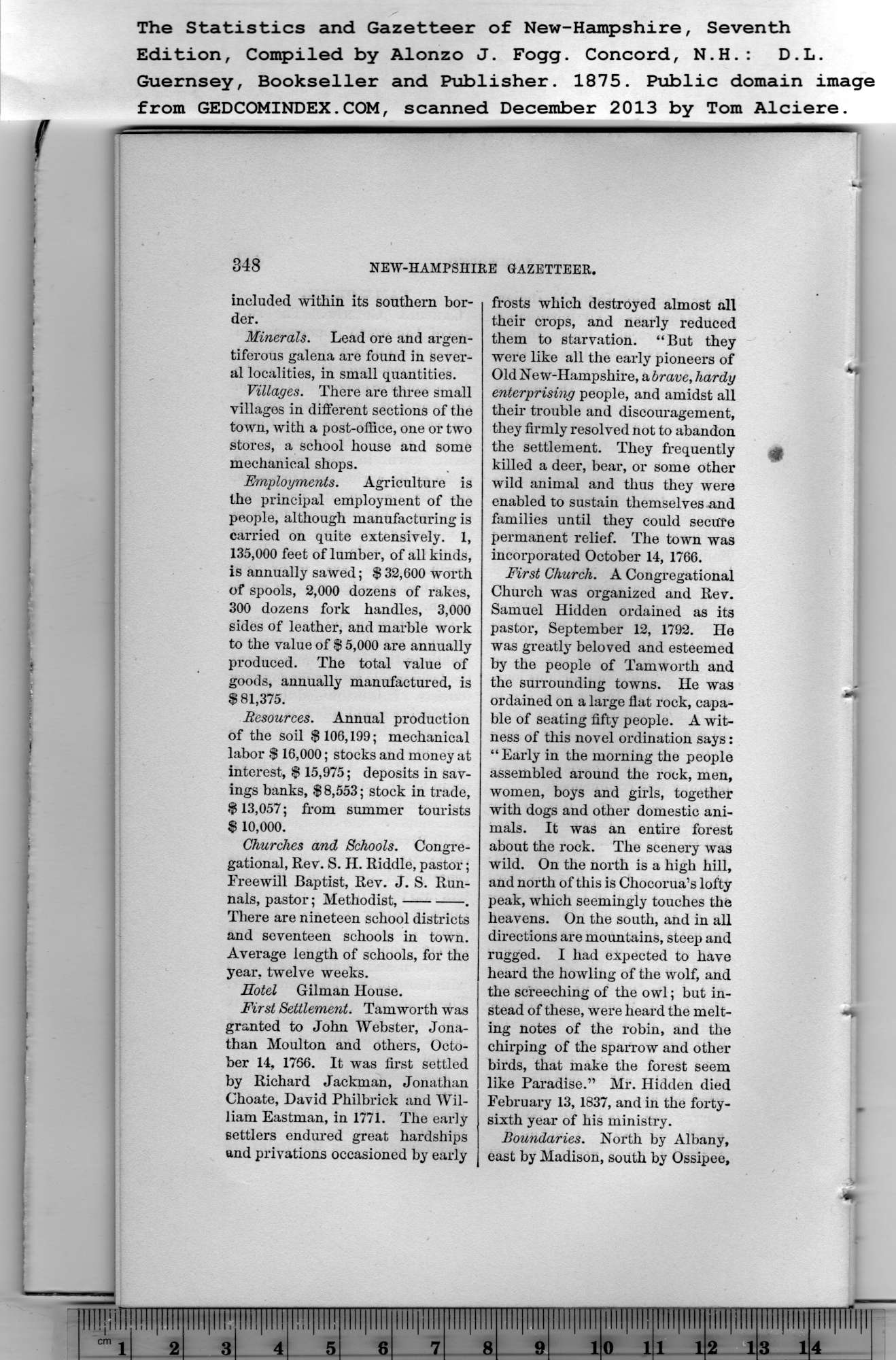|
included within its southern bor-
der.
Minerals. Lead ore and argen-
tiferous galena are found in sever-
al localities, in small quantities.
Villages. There are three small
villages in different sections of the
town, with a post-office, one or two
stores, a school house and some
mechanical shops.
Employments. Agriculture is
the principal employment of the
people, although manufacturing is
carried on quite extensively. 1,
135,000 feet of lumber, of all kinds,
is annually sawed; $ 32,600 worth
of spools, 2,000 dozens of rakes,
300 dozens fork handles, 3,000
sides of leather, and marble work
to the value of $ 5,000 are annually
produced. The total value of
goods, annually manufactured, is
$81,375.
Resources. Annual production
of the soil $106,199; mechanical
labor $ 16,000; stocks and money at
interest, $ 15,975; deposits in sav-
ings banks, $8,553; stock in trade,
$ 13,057; from summer tourists
$ 10,000.
Churches and Schools. Congre-
gational, Rev. S. H. Riddle, pastor;
Freewill Baptist, Rev. J. S. Run-
nals, pastor; Methodist,--.
There are nineteen school districts
and seventeen schools in town.
Average length of schools, for the
year, twelve weeks.
Hotel Gilman House. |
First Settlement. Tamworth was
granted to John Webster, Jona-
than Moulton and others, Octo-
ber 14, 1766. It was first settled
by Richard Jackman, Jonathan
Choate, David Philbrick and Wil-
liam Eastman, in 1771. The early
settlers endured great hardships
and privations occasioned by early
frosts which destroyed almost all
their crops, and nearly reduced
them to starvation. “But they
were like all the early pioneers of
Old New-Hampshire, a brave, hardy
enterprising people, and amidst all
their trouble and discouragement,
they firmly resolved not to abandon
the settlement. They frequently
killed a deer, bear, or some other
wild animal and thus they were
enabled to sustain themselves and
families until they could secure
permanent relief. The town was
incorporated October 14, 1766.
First Church. A Congregational
Church was organized and Rev.
Samuel Hidden ordained as its
pastor, September 12, 1792. He
was greatly beloved and esteemed
by the people of Tamworth and
the surrounding towns. He was
ordained on a large flat rock, capa-
ble of seating fifty people. A wit-
ness of this novel ordination says:
“Early in the morning the people
assembled around the rock, men,
women, boys and girls, together
with dogs and other domestic ani-
mals. It was an entire forest
about the rock. The scenery was
wild. On the north is a high hill,
and north of this is Chocorua’s lofty
peak, which seemingly touches the
heavens. On the south, and in all
directions are mountains, steep and
rugged. I had expected to have
heard the howling of the wolf, and
the screeching of the owl; but in-
stead of these, were heard the melt-
ing notes of the robin, and the
chirping of the sparrow and other
birds, that make the forest seem
like Paradise.” Mr. Hidden died
February 13, 1837, and in the forty-
sixth year of bis ministry.
Boundaries. North by Albany,
east by Madison, south by Ossipee, |
